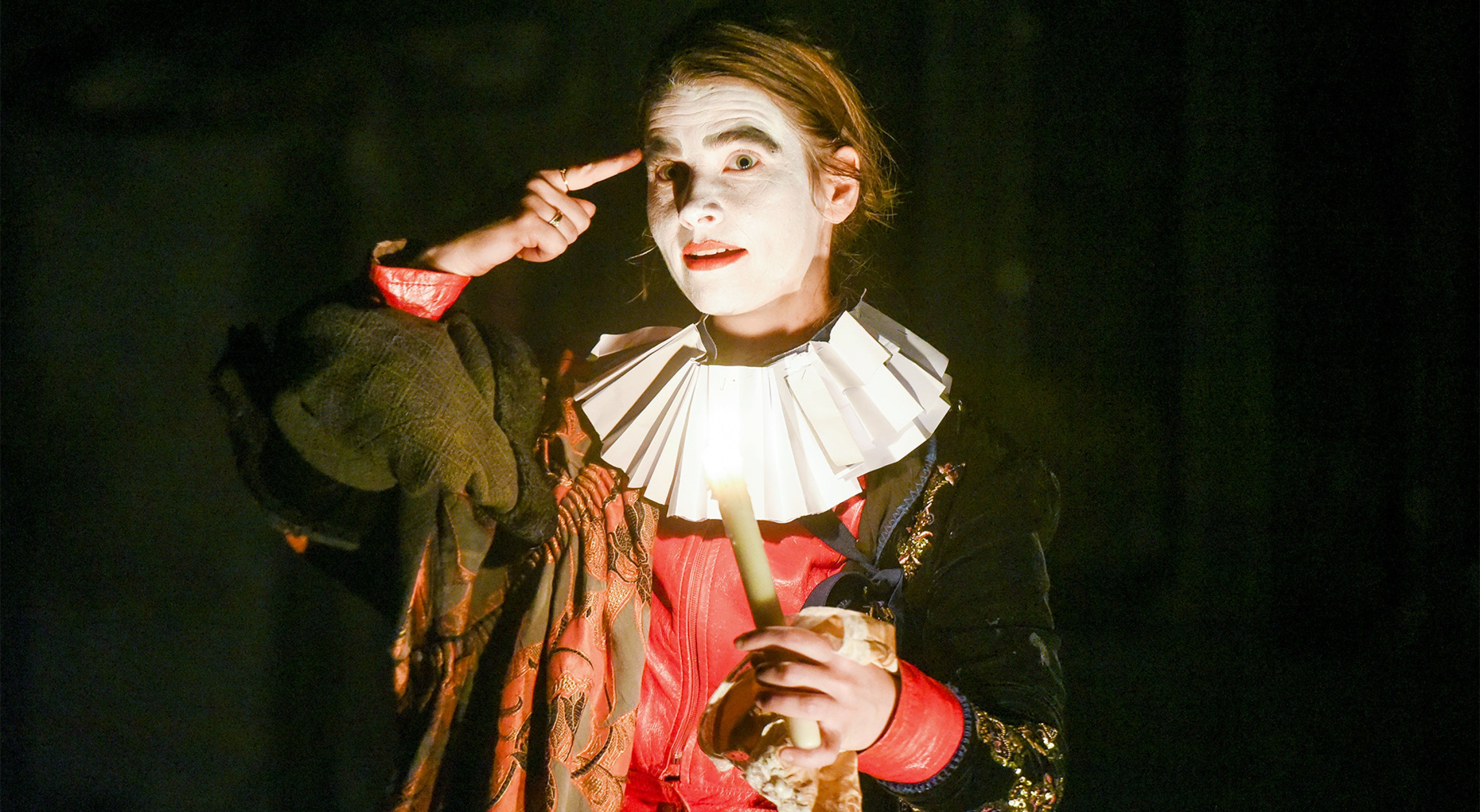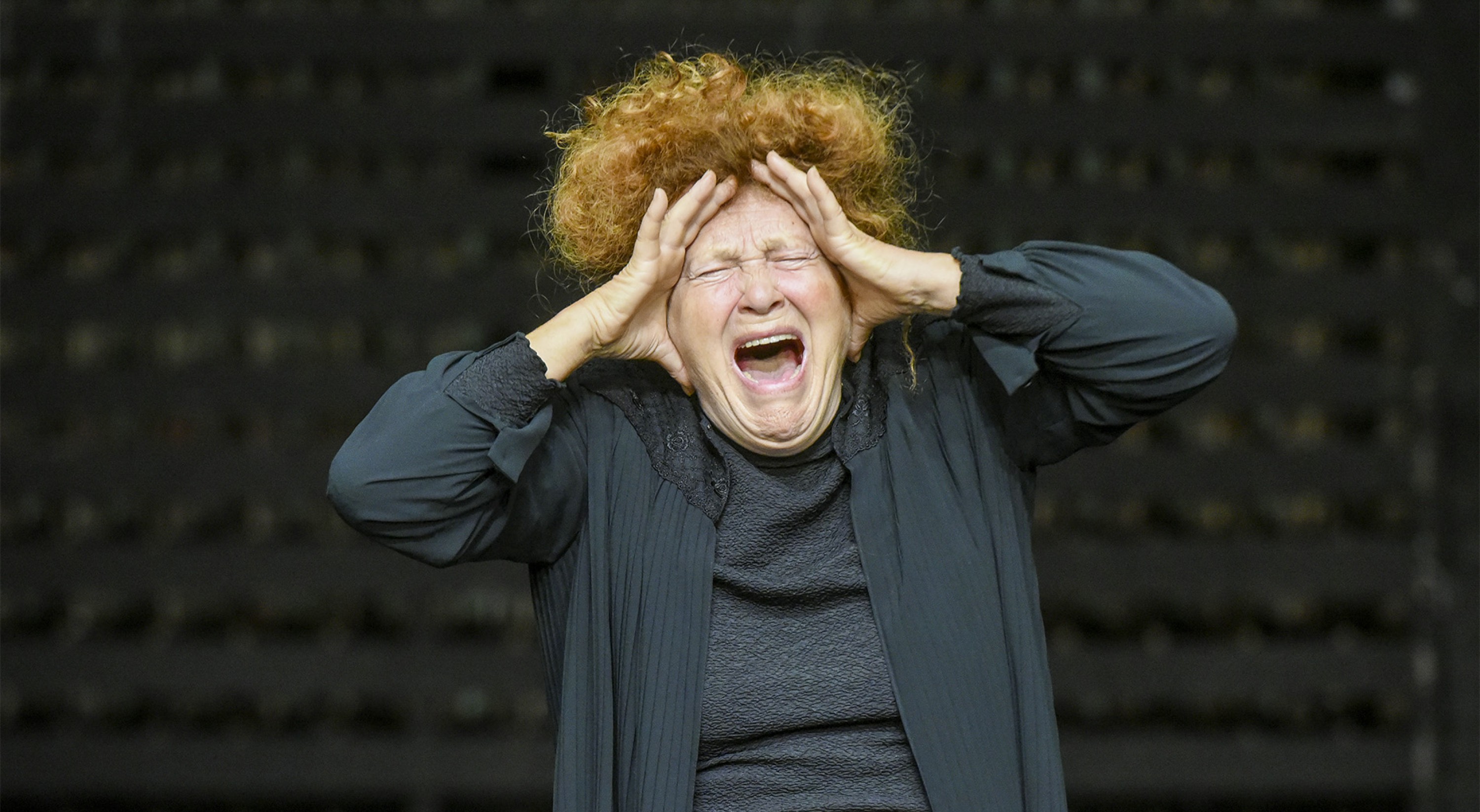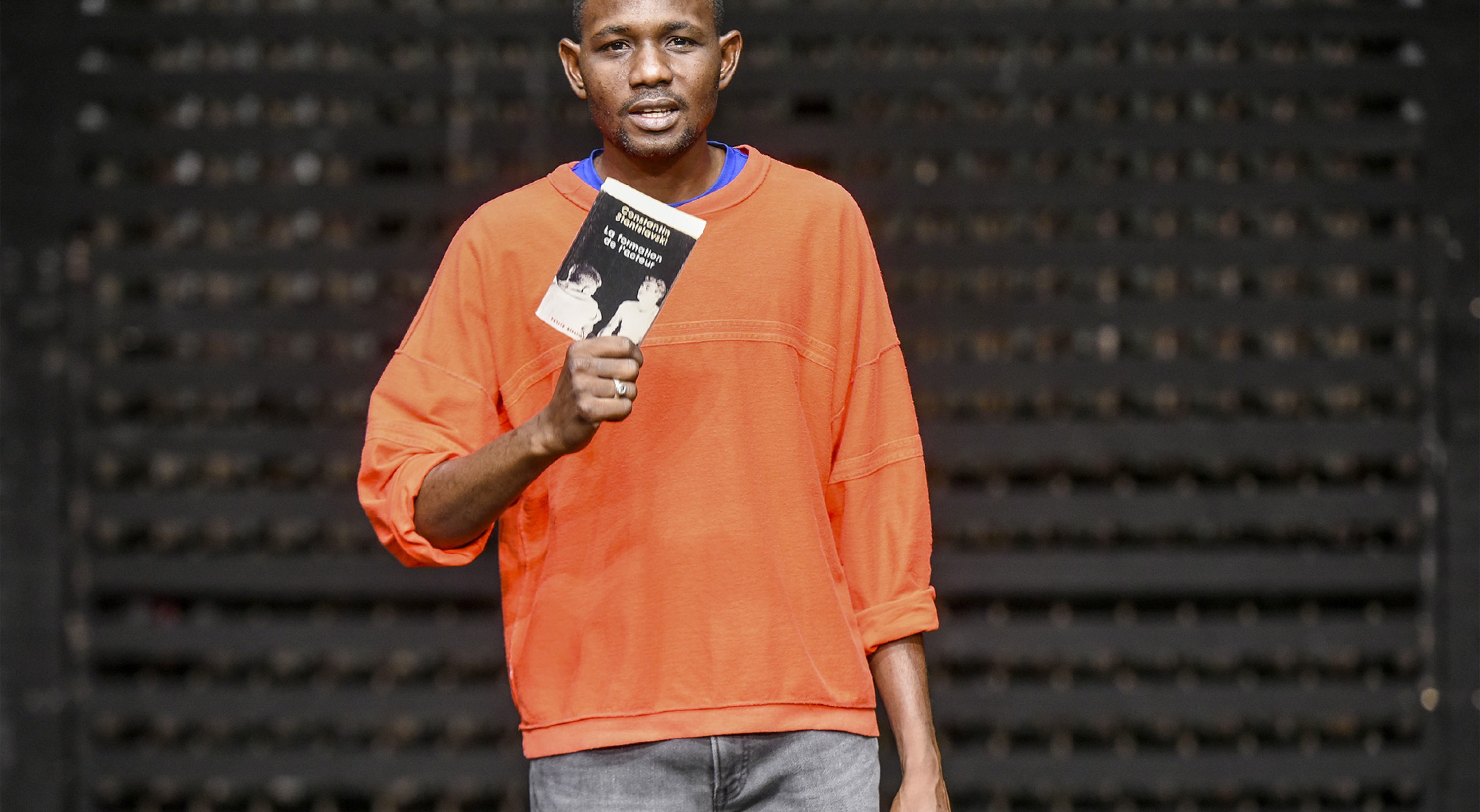Maxime Kurvers
Théories et pratiques du jeu d'acteur·rice (1428-2022) Une bibliothèque vivante pour l’art de l’acteur·rice – chapitres 1 à 28
decemberdec 15 – 17
Created and staged by Maxime Kurvers
Featuring Évelyne Didi, Camille Duquesne, Julien Geffroy, Michèle Gurtner, Mamadou M Boh, Caroline Menon-Bertheux, Yoshi Oida
Text and stage work, Maxime Kurvers and team
Lights, Manon Lauriol
Costumes, Anne-Catherine Kunz
Wig, Mélanie Gerbeaux
Sewing, Maria Eva Rodrigues Matthieu
Produced by La Commune CDN d’Aubervilliers; MDCCCLXXI (Paris)
Co-produced by The Saison Foundation (Tokyo); Festival d’Automne à Paris
With support from the Ministry of Culture – Drac Île-de-France, as part of its creative support scheme, and from the Agency for Cultural Affairs of Japan
With the help of Ménagerie de verre (Paris) as part of Studiolab; Odéon-Théâtre de l’Europe (Paris); Tréteaux de France – Centre Dramatique National; Théâtre Saint-Gervais (Genève); Morishita Studio (Tokyo), which provided space for research and rehearsals Maxime Kurvers is an associate artist at La Commune CDN d’Aubervilliers Co-directed by La Commune CDN d’Aubervilliers; Festival d’Automne à Paris
Looking back at the foundational texts of theater, Maxime Kurvers takes a critical look at pedagogical tools for actors. By having his performers provide a loose rendition of theoretical precepts, he contributes to a real-life encyclopedia of these theories, which, in this case, are repurposed.
Kurvers began his research on actors’ imagination in La Naissance de la tragédie in 2018. Now, he invites actors to question the methods they learned by feeling out the gap between theory and the resulting practice. This is a journey through the theoretical foundations of theater, a renewed foray into Zeami, Diderot, Brecht, Meyerhold, Lecoq, Bogart, or Overlie, a literal reading of their texts as a basis to produce theatrical “precipitations,” to use a chemistry metaphor. In doing so, each actor makes both an intellectual postulate and a real-life demonstration on how to put their theatrical know-how into practice. These performative drills feed into a dynamic library, brought to life in contravention of every rule of dramatics. By intellectualizing the acting process, Kurvers anchors it back into its historical dimension in an effort to better understand how each actor inevitably subjectivizes speech, leveraging its plasticity. This sequence of enunciative scenarios, derived from each individual’s understanding of the text, is a chronicle of theatrical modernity. The actor is informed, free in their interpretation, potentially sovereign. Last but not least, by emphasizing actors’ role in modern society, Kurvers proves that dramatics is a tool, different in each era, used to depict the world.
In the same place



